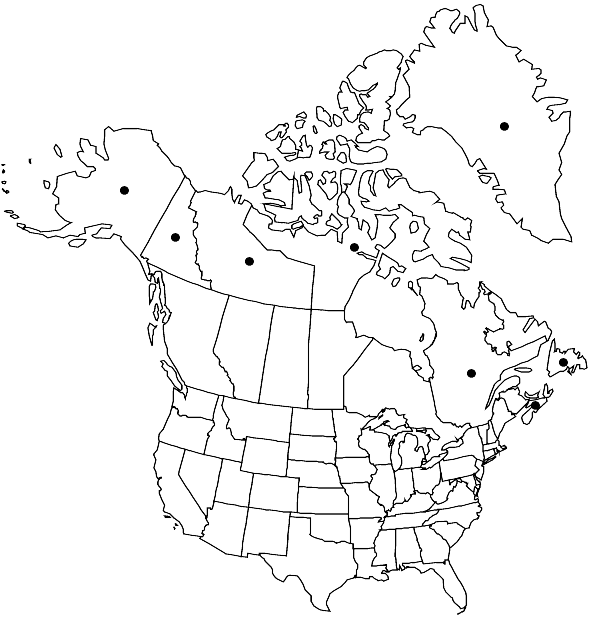Timmia norvegica var. excurrens
Bryoph. Itin. Pol. Norv., 121. 1906,.
Plants generally smaller and more delicate than those of var. norvegica. Leaves 2–6 mm, 0.5–0.6 mm wide at mid-limb; cells of mid-limb lamina 6–10 (–11) × 6–9 (–10) µm; costa excurrent, smooth on abaxial surface of sheath, smooth or slightly papillose on abaxial surface of the limb, with one–several teeth at back near the apex; base of costa pale and not strongly attached to the stem; stem tips often with loose deciduous clusters of almost linear leaves (ca. 3 × 0.1–0.2 mm).
Habitat: Calcareous areas, often on shaded limestone cliffs near rivers in Arctic and boreal regions, intermixed with other mosses, including other taxa of Timmia
Elevation: low to moderate elevations (0-1500 m)
Distribution

Greenland, Nfld. and Labr. (Nfld.), N.W.T., Nunavut, N.S., Que., Yukon, Alaska, Eurasia (Scandinavia), Eurasia (Switzerland), Eurasia (Poland), Eurasia (Russia), Atlantic Islands (Iceland)
Discussion
Variety excurrens is known also as a Quaternary subfossil from New York and Vermont. Variety excurrens is not known to occur with sporophytes, but the deciduous leaves no doubt act as vegetative propagules.
Selected References
None.
Lower Taxa
"broader" is not a number.